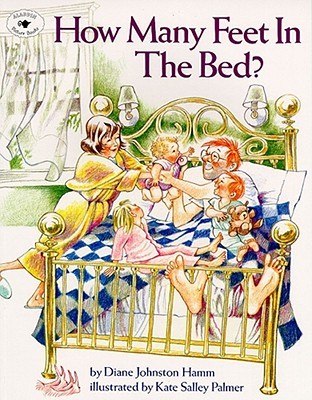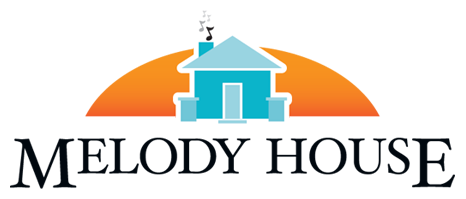
Where is the Math in Children’s Books? – by Al Stewart
Noted Early Childhood Consultant/Advocate, Al Stewart has generously agreed to Guest Blog for us from time to time. We are happy to share with you his first installment.
Many professionals believe and understand that “math is everywhere”. We use math throughout the day beginning with setting alarms, to measuring the ingredients for making coffee, to following the speed limit, as well as purchasing meals, gas, etc. We cannot get away from math.
The American Heritage Dictionary of the English Language defines math as “The study of number, form, arrangement, and associated relationships, using rigorously defined literal, numerical, and operational symbols.” The broad topic of “mathematics” includes, but is not limited to; arithmetic, geometry, algebra, trigonometry and calculus. We can break those down to appropriate topics in mathematics for young children such as classification, seriation, numeration, geometry, measurement, parts/whole, and color, just to mention a few. A critical aspect of math for young children is the vocabulary. If our expectation is for children to learn math concepts, we must be sure that they comprehend the meaning of the math terms – i.e., vocabulary.
The use of children’s books to enhance the learning math of concepts is just one strategy that has been effective in settings for young children. There are books for counting, shapes and color, as well as other areas of math. A few of the books that were written with a mathematics “focus” are:
- “Over in the Meadow” by Paul Galdone
- “The Cheerios Counting Book – 1, 2, 3” by Barbara Barbieri McGrath
- “Ten Little Fish” by Audrey Wood
- “Chicka, Chicka 1, 2, 3” by Bill Martin, Jr.
- “Big, Bigger, Biggest!” by Nancy Coffelt,
and there are many, many more.
There are also many books written for young children addressing other areas, but which have math concepts embedded in the story. One of those is the familiar “Goldilocks and the Three Bears”. There are several versions of this story, but the characters are similar and familiar to all of us. The obvious math connections are that there are “3” bears and that they are different “sizes” – large, medium, and small. Other items mentioned in the story also appear in three sizes, corresponding to the bear family members. The order is more complicated than one would first realize: Mama Bear is both bigger than Baby Bear and smaller than Papa Bear. There is a direct correlation between the sizes of the bears and the sizes of the bowls, chairs, and beds; the bigger the bear; the bigger the bowl, chair, and/or bed. When asked which item belongs to which bear, and why, children are able to distinguish the size differences of the bears and the items. They can match the appropriate item to the correct bear family member. Young children are also able to identify other items that might be in the bears’ house, and to explain how they would know which one belongs to Papa Bear, Mama Bear, and Baby Bear. Just ask them.
“How Many Feet In The Bed” by Diane Johnston Hamm is a book that allows the children to practice counting. The number of feet increases as family members gather in the parents’ bed. First, the father is alone in bed; then he is joined by the big sister, then the middle son, then the baby, and last, the mother. Counting after each person gets in the bed allows the children to practice one-to-one correspondence, as well as emphasizing that there are two more feet added each time. Suddenly, the mother must leave the bed (now how many are left in the bed?); then the father has to leave the bed (now how many are left in the bed?). Eventually no one is left in the bed – there are “zero” feet in the bed. Using a mat, a large towel, or a blanket, the children would be able to re-enact this story in the classroom. How much fun would that be? This story may be adapted by asking “How many feet are in the barn?”. Using cutouts of a barn, a variety of farm animals, the farmer, and the farmer’s son would lend itself to practicing counting the feet in the barn. Allowing the children to group farm animals by the number of feet they have would extend their understanding of quantity. This classification activity may be extended to discussing animals with two feet, four feet, and more than four feet, as well as animals with zero feet. Can you name any animals with more than six feet, or zero feet? Think “outside the box”.
Here is a short list of other books that have mathematics concepts embedded in them:
- “Today is Monday” by Eric Carle
- “We’re Going on a Bear Hunt” by Michael Rosen and Helen Oxenbury
- “I Went Walking” by Sue Williams
- “Rosie’s Walk” by Pat Hutchins
- “Sitting in My Box” by De Liffegard
- “Ma Dear’s Apron” by Patricia C. McKissack
- “Cookie’s Week” by Cindy Ward and Tomie dePaola.
These books provide opportunities for young children to better understand concepts in the mathematics topics of Time, Spatial Relationships, Size, Measurement, Ordinal Numbers, and more.
Just remember that reading math storybooks, and storybooks with embedded math concepts, can stimulate children’s thinking, language, and enjoyment. Keep searching for the math. Enjoy!
With 45 years devoted to Early Childhood Education, Al Stewart has certainly made an impact on the lives of children and teachers alike. He has taught Head Start, Kindergarten as well as a Graduate Early Childhood class at UTD. In addition, he has conducted numerous Trainings at the local, state, regional and national level.
